Although it has been very difficult to decide, in this article we present our top 10 of our favorite materials to use in the classroom: permanent box, liquid transfer, cylinders, the pink tower, color tablets, mobile alphabet, etc.
In the previous article we talked about the contribution of Montessori materials in education, Although it has been very difficult to decide, in this article we present our top 10 of our favorite materials to use in the classroom.
1.- Permanence Box – Push Ball
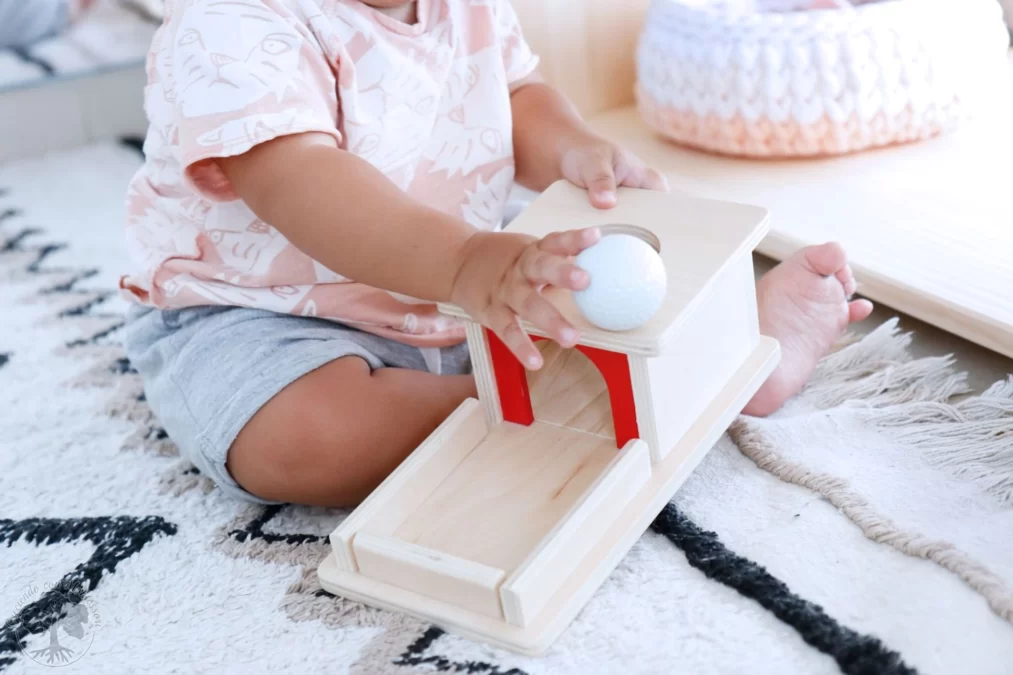
It is as simple as the child putting a ball in the box and as complex as understanding that the ball is inside even if they cannot see it. What is called “object permanence.
The fact of knowing that things do not disappear when they are out of sight may seem obvious to you, but let's remember that everything we know to date is the product of our learning. This material acquires great significance in the development of a child of between 7-8 months and 2-3 years. Since, for example, it will help him assimilate that you don't disappear and you will surely come back for him after school.
In addition, it helps to develop:
- fine motor skills
- body balance
- eye-hand coordination
- Strengthens visual perception skills and visual motor coordination.
2.- Liquid transfer activities
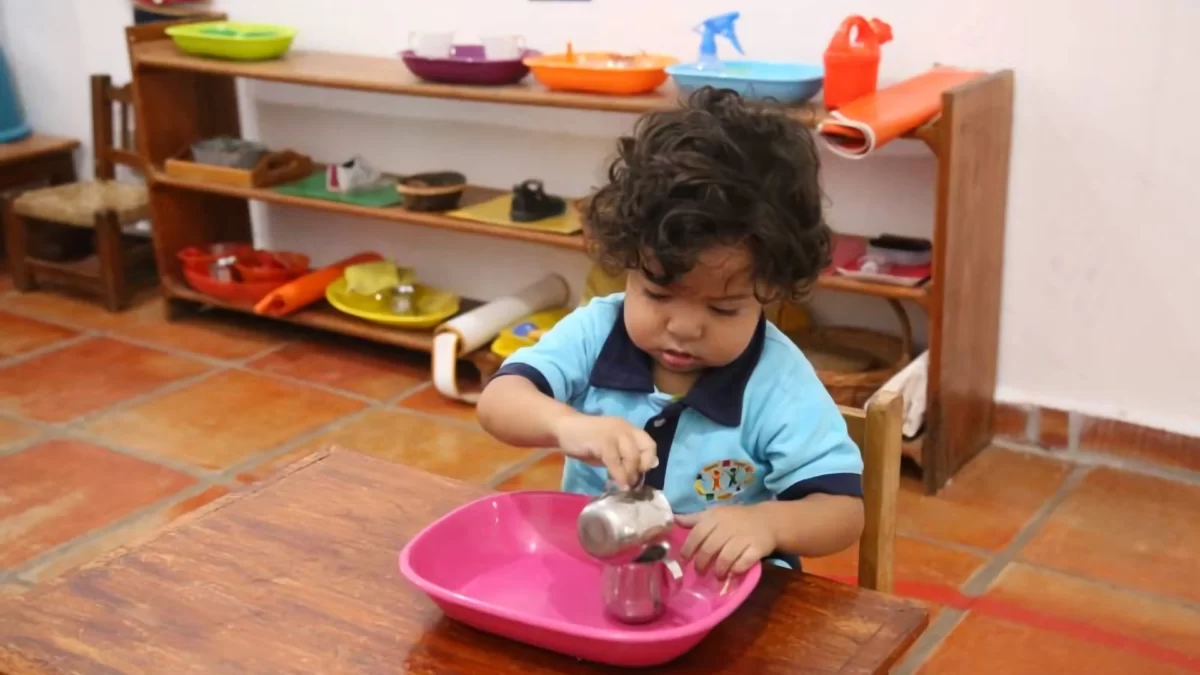
Children's favorite hands-on life activities involve water. The process of transferring water from one container to another is very entertaining for them. an activity that can easily be done at home too, provides them with: concentration, hand-eye coordination, with fine motor skills, muscle strength and indirectly prepares them to start reading and writing.
3.-Montessori cylinders

We find them in two presentations, the first is a natural color with a button, for the little ones, and the second is without a button and in colour. They are handled in 4 set blocks:
- With cylinders of the same height and different diameter.
- Cylinders that decrease in height and diameter.
- Cylinders that have the same diameter and decrease in height
- Has cylinders that increase in height and decrease in width
In both cases they facilitate the assimilation of concepts such as size, weight, height and diameter. As well as visual discrimination, hand-eye coordination, attention, concentration, it develops independence, the clamp is strengthened and practiced as preparation for pre-writing, it satisfies the sense of order and increases language (thin, thick, narrow, long, short, etc.).
4.- The Pink Tower
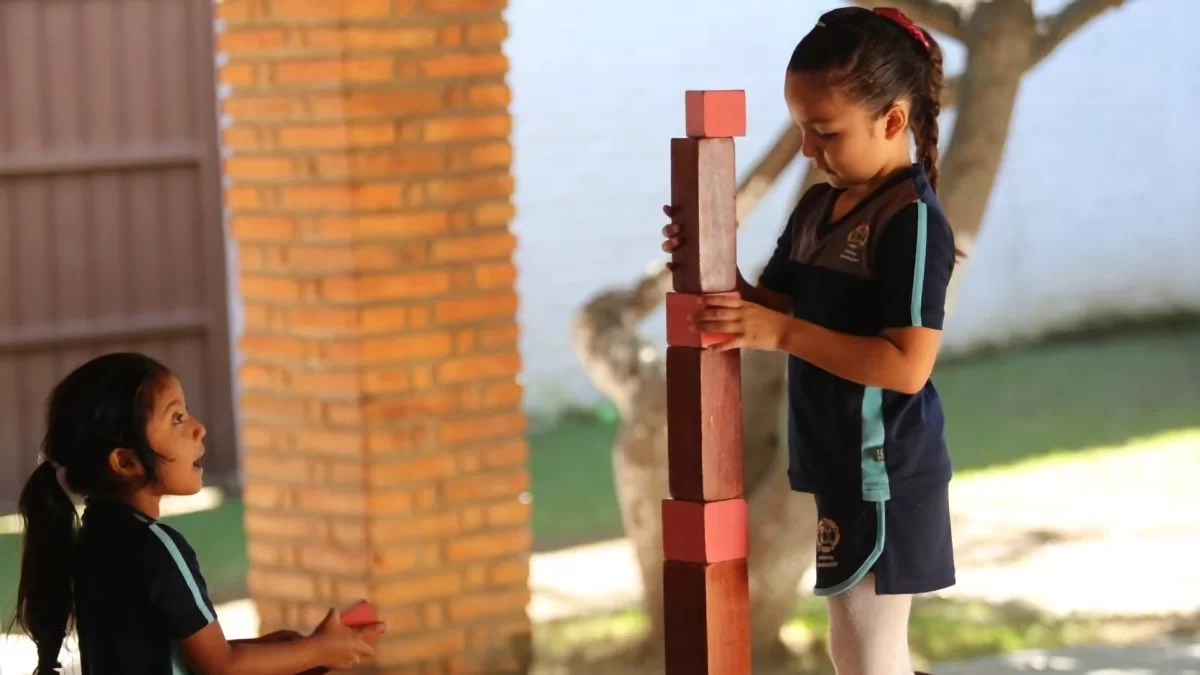
One of the most famous materials, Montessori could not be missing from the list. Without a doubt, the pink tower is one of the best tools to work on logic. This nestable material, sIt is made up of 10 cubes of different sizes, volumes and weights. The largest cube measures 10 cm and the smallest 1 cm.
You may be wondering, why pink? Well, let's remember that María Montessori developed each of these materials scientifically. After testing the tower in various colors, she discovered that the color pink called and held the attention of children much more than Other colors.
This material has a great versatility to work concepts of motor skills, order, sizes, weight, language (up, down, big, small...) and geometry.
5.- Color tablets

From the age of 3, the color tablets are used as part of the sensory materials to help directly develop the chromatic sense (color appreciation, sensitivity to color harmony, visual discrimination of color nuances). And indirectly develop concentration, independence and order.
6.- Mobile alphabet
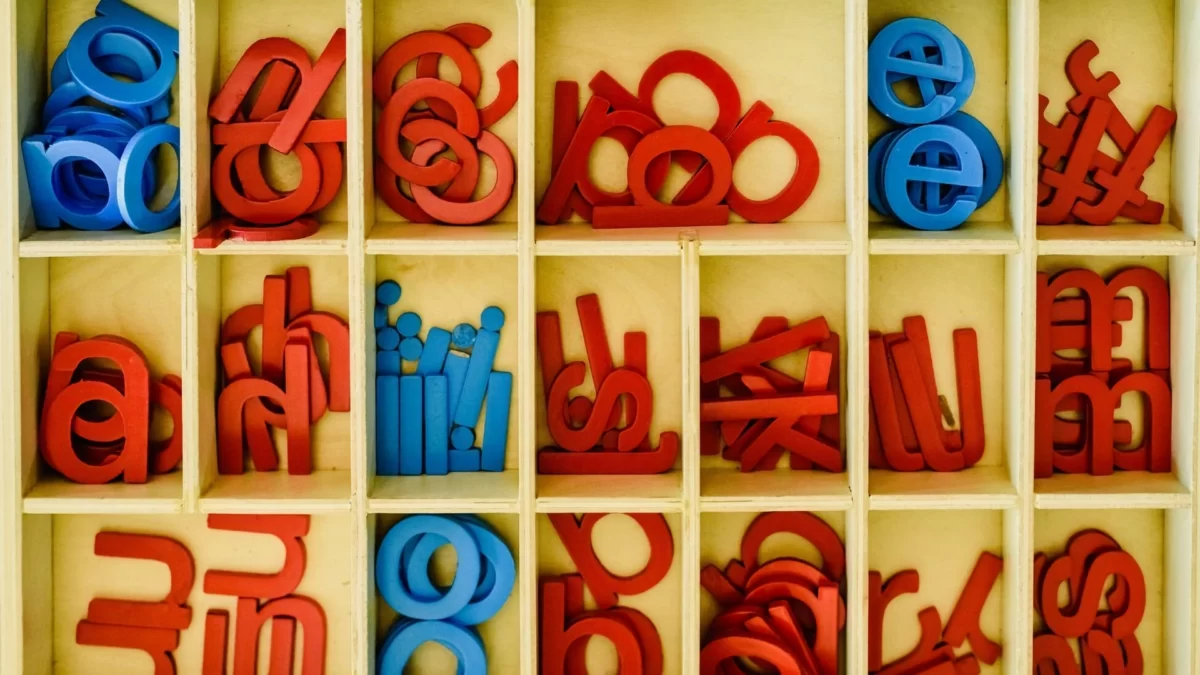
It is an alphabet made up of wooden letters, blue for vowels and red for consonants. For the 4-8 year cycle, When we start with literacy, the mobile alphabet has unlimited possibilities for activities.
The importance of the use of letters focuses on sound and expression. Being a tactile material, it creates an experience, different senses, such as touch together with sight and hearing, making learning much deeper.
7.- Puzzle maps
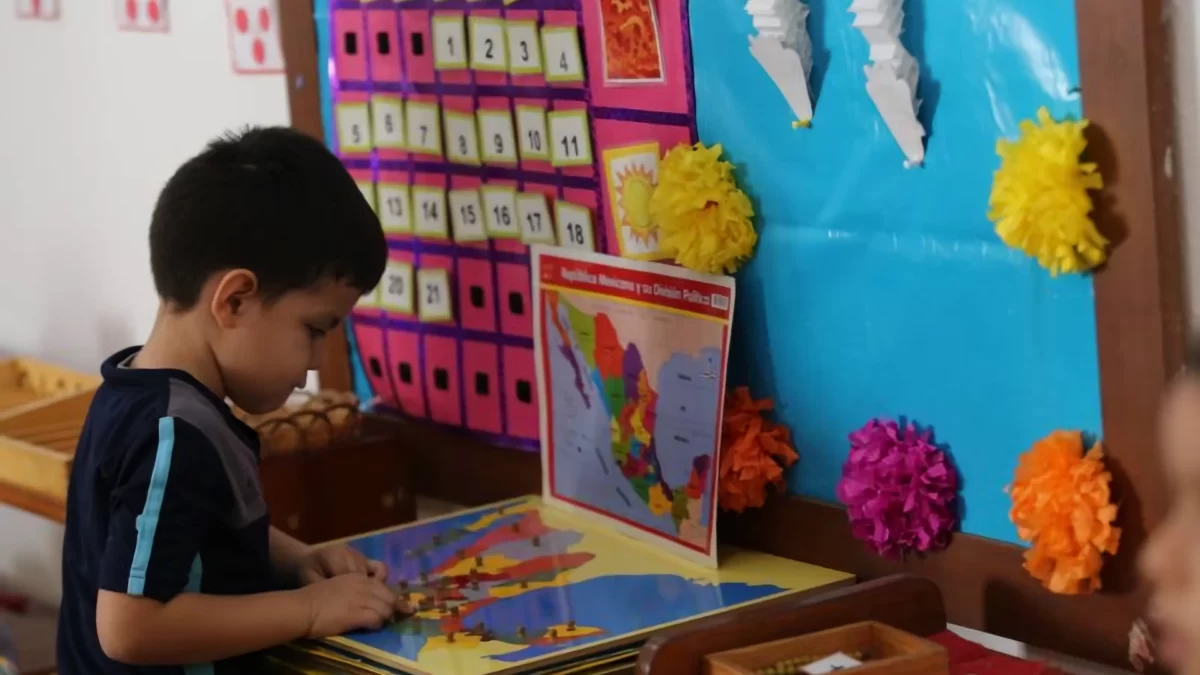
The presentation of puzzles allows children in a first stage to play to complete the puzzle, thus developing fine motor skills and eye-hand coordination. Later, you work with geography in a sensory way and combined with other elements you can expand your knowledge of flags, capitals, culture, environment, history, etc.
8.- Division tables
Starting the introduction to a child about mathematical operations using symbols on a piece of paper does not make it easier for them to understand and internalize the meaning of the operation. Therefore, the Montessori division board presents a visual option that ensures that the process of mathematical abstraction.
The objective of this table is that the children are able to divide a specific number of marbles between the number of pawns selected, having the possibility of obtaining dividends from 1-81. This method is intended to integrate the concept that dividing means distributing.
9.-Multiplication control board

Continuing with the line of mathematical comprehension, the multiplication tables are a manipulative adaptation that María Montessori designed based on the Pythagorean table.
The board contains the multiples that must be placed in order on the table in the form of a puzzle by multiplying one of the numbers in the top row by all the numbers in the bottom column or vice versa. The material includes a self-correcting sheet of paper so that they can check if they have done it correctly.
This table allows progress in the complexity of knowledge according to the degree of development of the student, starting from memorizing the basic operations until understanding the distributive property, the associative property, the commutative property, etc.
10.- Trinomial
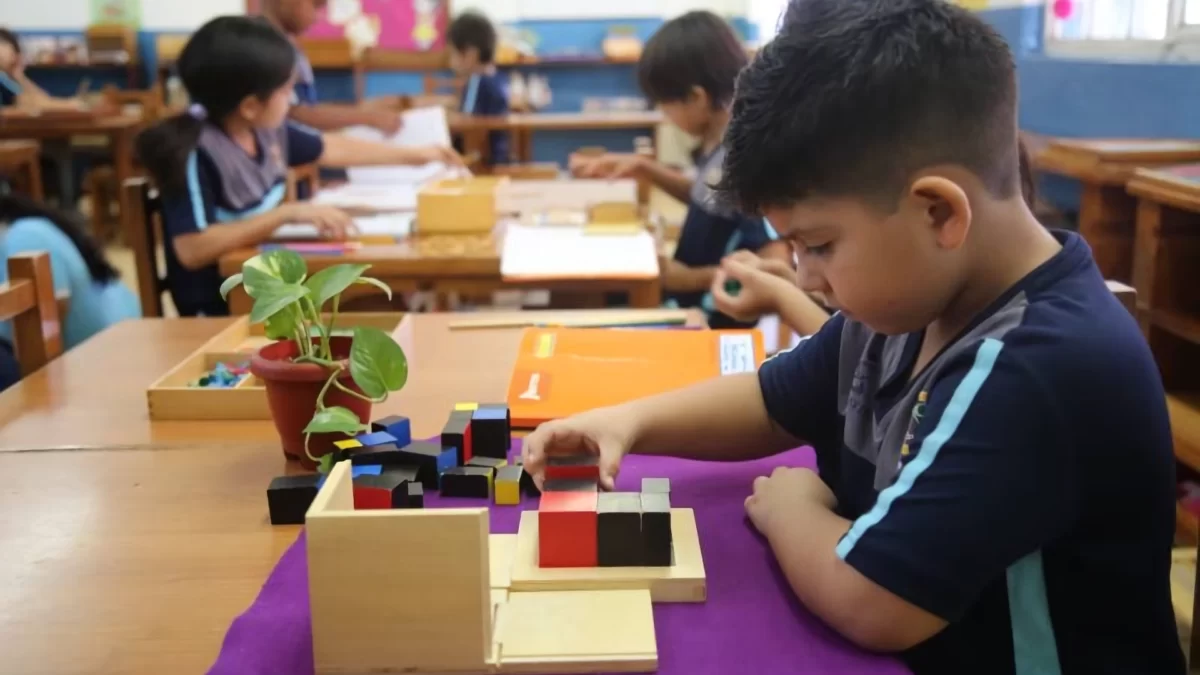
This material of the Montessori methodology It is perfect to help develop visual perception of three-dimensional patterns and prepare you for later work in mathematics. where the trinomial cube represents the algebraic formula (a+b+c)3 where the factors of the equation are represented by cubes and prisms.
On another occasion we will continue talking about other Montessori materials and how you can use them from home. If you have in mind any material, learning or age range that you want to know more about, leave us your comments.
